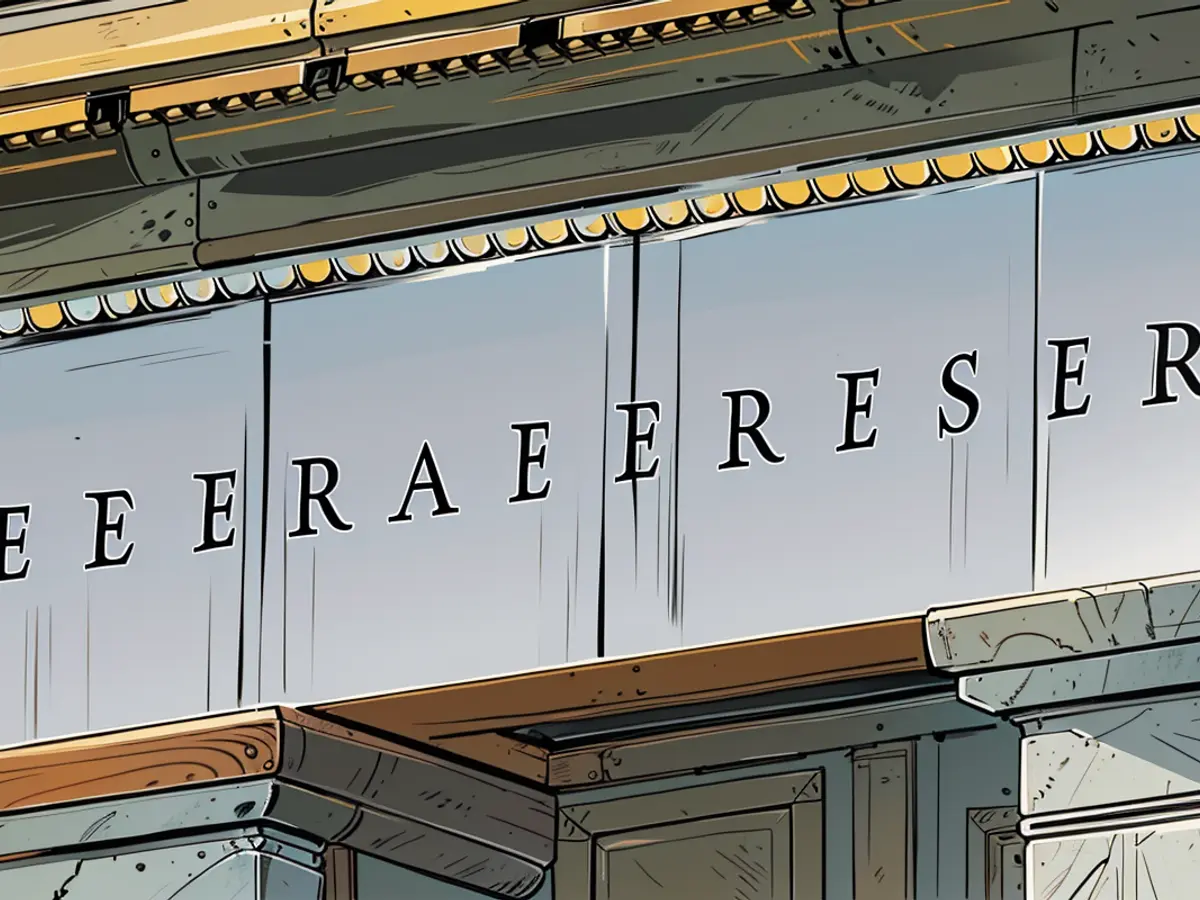What to do — and what not to do — now that the Fed is signaling lower rates
The Federal Reserve on Wednesday did not lower its key interest rate, which has been sitting at a 23-year high for the last 12 months. But officials continue to signal that the central bank may do so soon — most likely in September.
And the market expects that the central bank could continue cutting rates over the next two years. That means interest rates should decline on a wide swath of financial products, from credit cards and home loans to bank accounts, certificates of deposit and bonds, among others.
Given the many ways lower rates can affect your finances, here are some things to consider when deciding what steps to take in response.
Timing and magnitude matter
The prospect of lower borrowing costs will be welcomed by those seeking loans or trying to reduce debt. But, realistically, how much you’ll save when the Fed lowers rates will depend on how quickly it cuts and by how much each time. The answer for the near term is most likely “not that much.”
“Interest rates took the elevator going up, but they will take the stairs coming down,” said Greg McBride, chief financial analyst at Bankrate.
By that he means: “Rates are not going to fall fast enough to bail you out of a bad situation [this year],” McBride said. “And for savers, [the initial declines] won’t wipe out your interest earnings. Savers will still be way ahead of the game.”
That’s because one or two quarter-point rate cuts this year won’t meaningfully reduce many of your interest costs. But several cuts over the next year or two could make a noticeable difference, and it may be worth holding your fire on some moves until then.
“Don’t jump the gun too early on this stuff,” said Chris Diodato, a fee-only certified financial planner and founder of WELLth Financial Planning.
Here’s how lower rates may affect key areas of your financial life, along with tips on what to do about it.
Your home
Getting a mortgage is one of the biggest financial moves most people make. Mortgage rates are influenced directly and indirectly by several economic factors, and the Fed’s moves are one. Since loan amounts are substantial, this is one area where even small rate cuts could make a meaningful difference in what a homebuyer will pay.
For those buying a home this year, you may be tempted to buy down points to reduce your mortgage rate. Before doing so, Diodato advised, crunch some numbers to make sure it will actually save you money if you think you’ll also be tempted to refinance in a year or two should rates drop further. That’s because you will pay thousands of dollars to buy down your mortgage rate now, and then thousands more in fees to refinance.
To buy down a quarter of a point might cost you 1% of your loan or 4% for a full point, he said. To refi, the costs could be higher — they typically run between 2% and 6% of your loan, according to Lending Tree.
Given that mortgage rates have fallen at least 1.25 percentage points in every rate-cutting cycle since 1971, and often over two or three points, Diodato sees it this way: “Buying your rate down a quarter of a percentage point, or even a full percentage point, wouldn’t stop most people from wanting to refinance at some point during the next rate-cut cycle. So, my rationale is not to saddle folks with both paying for points and then the costs of a refinance.”
HELOCs: If you’re taking out a home equity line of credit, be aware that it’s no longer cheap money to borrow: The current average rate range for HELOCs is roughly 9% to 11%. A couple of quarter-point rate cuts from the Fed won’t make it meaningfully cheaper, McBride said. “Americans are sitting on more equity than ever, but you have to be judicious about how you tap into it, given how much it costs to borrow against it. Just because you have equity doesn’t make it free money.”
Of course, if you want a HELOC to serve as an emergency lifeline and you never tap it, the rate may be less of a concern. But it still may cost you money by way of closing costs, any requirement that you withdraw a minimum amount at closing, or any other ancillary fees for having the line, such as an annual fee or inactivity fee, McBride noted.
And if you already owe money on a HELOC, he suggested, “aggressively pay it down. It’s high-cost debt that won’t get cheaper soon.”
Your credit cards
Another perpetually high-cost form of debt is your unpaid credit card balance. A few rate cuts won’t make much of a dent in today’s record-high average rate of 20.7%. Even if they ultimately push down the average to where it was at the start of 2022 — 16.3% — it will still be a pricey loan.
That’s why, if you’re carrying credit card debt, the advice is the same as it has always been: If you qualify, sign up for a zero-rate balance transfer card that can buy you at least 12 to 18 months interest free so you can meaningfully pay down the principal you owe.
If that proves difficult to get, see if you can transfer your balance to a credit card from a credit union or local bank that offers lower rates than the biggest banks. “They typically have fewer perks, but their rates can be half as high,” Dodiato said.
Your car
If you want to finance the purchase of a new car, a rate-cutting environment may not help as much as you think. McBride notes that every quarter point cut knocks $4 a month off a typical loan for a $35,000 car. So a full percentage point drop amounts to just $16 a month, or less than $200 a year.
“Your real lever for savings is the price of the car you choose, how much you’re financing and your credit rating,” he said.
As for leasing a car, McBride noted, the effect of a Fed rate cut may be equally small on the so-called “money factor” you will pay to lease. And because many variables determine what that factor will be, it will be hard to figure out the impact of lower interest rates.
Your savings
The past year has been very good for anyone who parked cash in online high-yield savings accounts or various fixed-income vehicles, all of which were yielding 5% or more.
While those rates will come down — and some have already begun doing so — the initial drops aren’t likely to be huge. That means you’ll still be able to earn inflation-beating returns for a while.
For example, plenty of online high yield savings accounts are still offering between 4.5% to 5.2% yields, according to Bankrate. The same is true of certificates of deposit.
Among Treasury notes with maturities of between two- and 10 years, yields are north of 4%, according to Schwab.com.
Lock in high rates now: If you’re within five years of retirement, McBride suggests locking in some of these still-high rates to grow cash you’ll need to cover living expenses in the first few years after you stop working. Having that cash on hand means you won’t be forced to pull from your longer-term portfolio should there be a big market downturn at the start of your retirement.
For instance, many CDs with durations of two, three, four or five years are currently paying between 4.85% and 5% on Schwab.com. If you do opt for one of those maturities, try to find one that is not “callable.” A callable CD is one that the issuer can decide to close out before its maturity date, which might happen if rates fall considerably during the next few years.
If you live in a high-tax area, Treasuries might be a better bet since they’re exempt from state and local taxes.
“Even though many bond yields are off their recent highs, investors should still consider buying some intermediate-term investments now before rates are cut if they want to lock in a higher yield for some of their money, such as Treasury notes maturing in the next four to 10 years,” said Collin Martin, a fixed income strategist at the Schwab Center for Financial Research.
And AAA-rated municipal bonds are exempt from federal taxes, and in some cases, state and local taxes too. Yields on AAA munis with maturities between one and five years are ranging between 3.2% and 4.19%.
But don’t keep too much in cash: For people not near retirement, it may no longer make sense to leave quite as much cash in these types of vehicles going forward.
“I caution people against the cash trap. A lot of people, used to these nice savings rates, were diverting money from stocks and longer-term bonds,” said Diodato, who predicts yields on savings will eventually fall to 3% in the next two years.
His advice: Don’t keep more than six months’ to a year’s worth of living expenses in cash or cash equivalents.
“Anything more than that and you’re putting a drag on your future net worth,” he said.
Despite the Federal Reserve potentially lowering interest rates in September, the near-term savings might not be significant. According to Greg McBride, chief financial analyst at Bankrate, rates are not expected to fall fast enough to significantly reduce many interest costs this year.
For those considering buying points to reduce their mortgage rate, Chris Diodato, a fee-only certified financial planner, advises crunching the numbers first to ensure it will save money in the long run, considering the possibility of refinancing if rates drop further.








